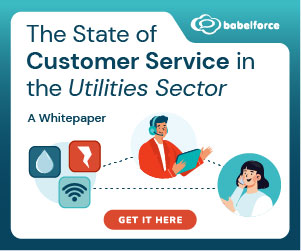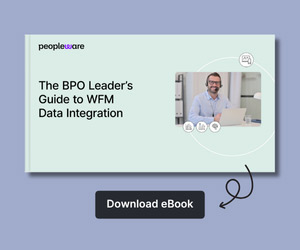Customer feedback is one of the most powerful tools in a contact centre’s toolbox, but only if it’s gathered and used effectively.
Too often, contact centres collect feedback without a clear strategy, ask the wrong questions at the wrong time, or fail to act on what they learn.
To find out more, we asked Mikkel Rodam, Account Executive at babelforce, to outline four steps to significantly enhance feedback quality, drive meaningful change, and ultimately boost customer satisfaction.
Video: Improve CSAT: Try Using the ACAF Model
Watch the video below to hear Mikkel explain how contact centres can improve their CSAT scores by using the ACAF Model:
With thanks to Mikkel Rodam, Account Executive at babelforce, for contributing to this video.
This video was originally published in our article ‘Quick Wins to Improve Your C-Sat Scores’
How to Use the ACAF Model
To unlock real value, contact centres should adopt a structured approach like the ACAF model, which stands for:
- A – Ask
- C – Categorize
- A – Act
- F – Follow Up
“The foundation for good feedback is the ACAF model – that Stands for Ask, Categorize, Act and Follow Up. If you can excel at these four areas of processing feedback, you have four really effective points to improve your scores.”
The ACAF model provides a simple yet powerful framework to strengthen your customer feedback loop.
So let’s take a look at how this works:
1. Ask – Make Your Questions Count
“Number one – Ask. Just requesting feedback isn’t enough. Asking well means asking with focus. Do you need to know something about your product, your customer service, or your brand perceptions?
Pick a lane and ask straightforward questions. Tell your respondent in advance how many questions there will be.”
Simply requesting feedback isn’t enough. You need to ask the right questions, in the right way, with a clear purpose.
- Be intentional: Are you seeking insights into your product, your customer service, or overall brand perception? Choose one focus area at a time.
- Keep it simple: Ask clear, straightforward questions that are easy to understand and respond to.
- Set expectations: Let respondents know how many questions they’ll answer and why their feedback matters. A little context goes a long way in improving completion rates and quality.
By asking with focus and clarity, you’re more likely to get meaningful, actionable feedback.
2. Categorize – Match Questions to Context
“Number two – Categorize. For me this means knowing when and where to ask questions based on the topic.
It makes sense to ask customer service questions in post-call surveys and automated follow-ups, or to ask product questions within delivery and subscription journeys.
And don’t ask incoming callers to your contact centre about brand perception and marketing campaigns, because they won’t have any good answers for you.”
Not all feedback should be collected in the same way or at the same time, but the key is to match your questions to the moment.
- Ask customer service questions during post-call surveys or automated follow-ups.
- Collect product-related feedback within delivery or subscription journeys – when the experience is fresh.
- Avoid asking brand perception or marketing questions during a support call. The person reaching out is likely focused on resolving an issue, not evaluating your latest campaign.
When you align the topic of your questions with the right touchpoint, you’ll gather higher-quality responses from the right people.
3. Act – The Critical (and Often Missing) Step
“And number three is the most important part, and also the part that people often get wrong. Most contact centres have almost no ability to make changes even when they have obvious problems to solve, and there is no quick fix.
In my view, operational leaders should make a core KPI of the ability to easily update service processes.
And if you find you cannot make the changes you want to, you should document that, and at the end of the quarter you should go to your procurement leaders with a list of the changes you couldn’t make, along with the customer feedback you collected and potentially an ROI of the updates. It will get much harder to say no to you then.”
This is where many contact centres fall short, and even when problems are clearly identified, nothing changes, and customers notice.
- Empower your team: Contact centres need to have the capability and permission to make changes based on feedback. Make adaptability a key performance metric for your operations team.
- Build a process: If you’re unable to implement changes due to system or vendor limitations, document the barriers.
- Make the case: At the end of the quarter, present procurement or leadership with a list of improvements you couldn’t make, backed by the customer feedback that supports those changes, and ideally an estimate of the ROI those changes could bring.
By taking action, or escalating your inability to do so, you build a culture that values continuous improvement.
4. Follow Up – Close the Loop
“And finally, we have number four – Follow Up. This is both easy and important, because 71% of customers do not believe that their feedback makes any difference.
The simplest thing you can do to change that is to let them know that you’ve received the feedback, and that your business takes the time to understand it.”
This final step is both easy and often overlooked, and yet it’s crucial: 71% of customers don’t believe their feedback makes any difference.
- Let people know you’re listening. A simple confirmation that feedback was received and is being reviewed can go a long way.
- Share outcomes when possible. If feedback leads to a visible change, tell your customers. It builds trust and encourages future participation.
- Following up turns passive feedback into engagement – and helps customers feel like valued participants, not just data points.
If you are looking for more great insights from the experts, check out these next:
- 3 Ways to Reduce Agent Stress Through Training and Culture
- 4 Ways Purpose-Built AI Is Transforming CX
- 5 Ways Smart Routing and AI Improve Contact Centre Efficiency
- The Secret to a Successful Tech Upgrade
Author: Robyn Coppell
Reviewed by: Xander Freeman
Published On: 1st Aug 2025 - Last modified: 25th Sep 2025
Read more about - Video, babelforce, Customer Satisfaction (CSAT), Mikkel Rodam, Videos





































